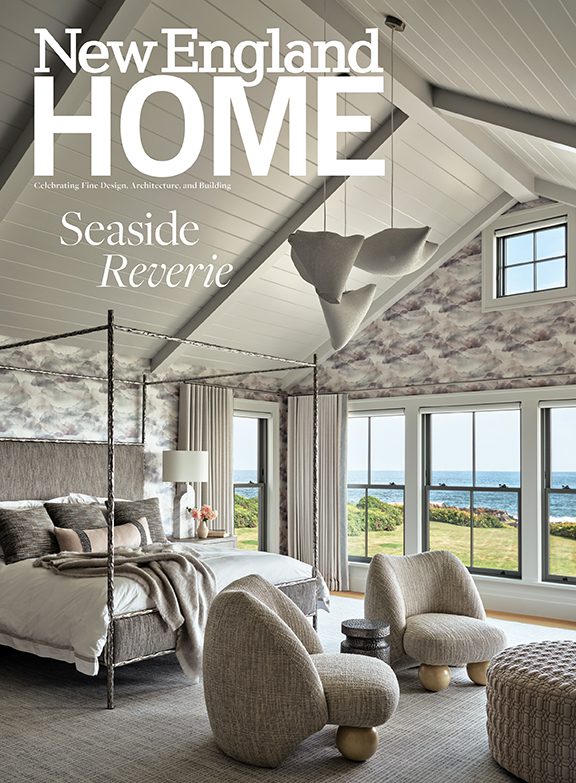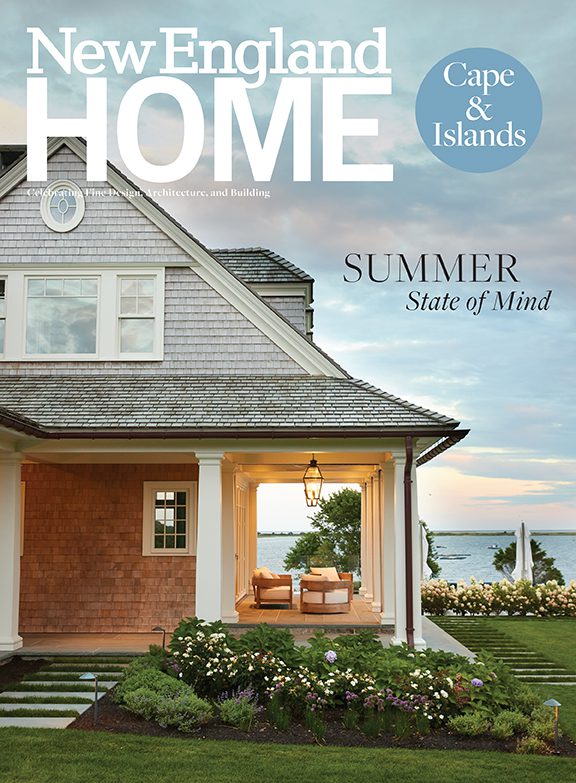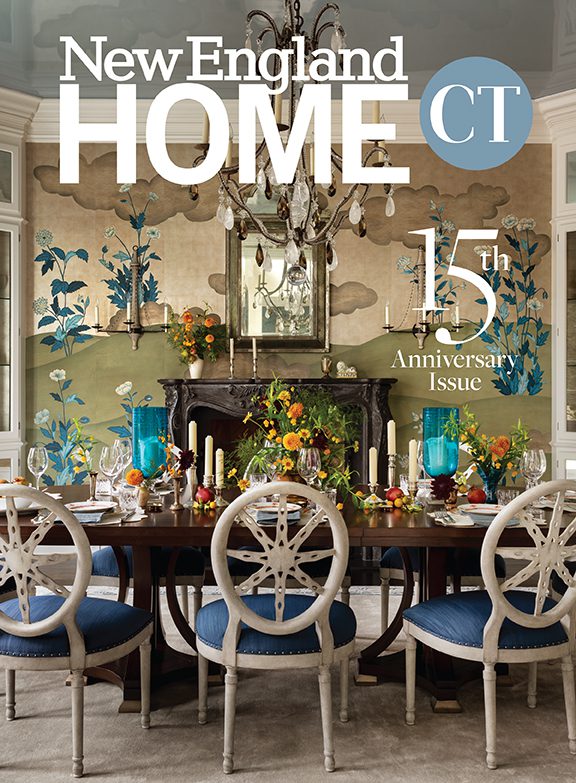Ahead of the Curve
January 11, 2011
Text by Nena Donovan Levine Photography by Peter Baker
Artist Laura Spector is allergic to right angles. On the other hand, she’s never met a curve she didn’t like. What she likes best—and uses to create her art—are sinuous, rope-like vines called oriental bittersweet. In her hands the twisty vines become striking pieces of furniture and landscape art, some cast in metals like aluminum and bronze. She made her first piece, a bench, nearly twenty years ago and has pushed rustic up against refined ever since.
In search of her raw material, Spector forages in woodlands and wetlands beyond her Fairfield studio and throughout the Northeast. If she needs a quantity, she employs a battery-powered Sawzall to cut down the climbing vines. If fewer will suffice, she throws a bow saw over her shoulder and clambers up to reach them. When she’s done collecting, she flings the harvest onto the bed of her red pickup and heads back to the studio to begin her work. While the vines are alive, they are pliant, even if not readily so. Four weeks after cutting, they are dry, rigid and useless.
Oriental bittersweet (Celastrus orbiculatus) arrived in North America from China in the late nineteenth century as an ornamental garden plant, but it is now best known as an invasive pest. The vine spreads widely and wildly, strangling trees and eventually killing any foliage it embraces; its green tendrils become thicker and woodier over time. After obtaining permits to harvest it from protected wetlands and other properties, Spector clears out the invader and, through her artistry, renders it ornamental once again.
“It’s a dance,” Spector says of the transformation. A piece is “alive when it’s done. It’s still got energy, like when a dancer holds a pose.” As one might guess from her gestures and turns of phrase, Spector majored in dance at Bennington College. She describes her work as “more José Limón—very fluid—than Merce Cunningham—structured, angular.”
She is just as agile today as she was in college and, at less than one hundred pounds, seemingly as delicate as a wood sprite. But her arms and upper body are strong, says Barbara Israel, a longtime client and the author of Antique Garden Ornament: Two Centuries of American Taste. “They have to be,” she says. “Laura loves being in the woods pulling vines down.” (Spector’s most recent piece for Israel certainly appears to have been an undertaking: measuring nine feet tall, eight feet wide and five feet deep, the majestic seating arbor, titled Dangerous Beauty, arrived at Israel’s property on a flatbed truck.)
Her forays into the woods haven’t left Spector unscathed, however. She has contracted both malaria and Lyme disease in pursuit of her art. While she acknowledges the risk, hiring someone to harvest the vines for her simply isn’t an option. “I’m working with a feeling,” she says. “I have to meet [my pieces] where they live.”
Spector’s fearless artistry has garnered her an impressive roster of clients, from New Jersey’s Grounds for Sculpture park to luxury hotels. Her whimsical furniture pieces—benches, chairs, tables, headboards, lamps and mirrors—have caught the attention of celebrities like Oprah, Sting and Cindy Crawford. Manhattan stores such as Bergdorf Goodman and designer Catherine Malandrino’s boutique have featured her work in displays. Spector’s large-scale spheres, which she designed as garden follies, have been used to particularly dramatic effect. The W Hotel in Dallas set one of her six-foot spheres on a pedestal in the hotel courtyard and lit it from within. For Holly Hunt’s 2008 Art Basel/Miami exhibit, Spector linked three of the spheres, the tallest of which overshadowed the artist herself, in a bold ball-and-chain motif.
Though she’s grateful for the recognition she’s received, including a recent nomination to Interior Design magazine’s list of “design icons,” Spector forthrightly says, “That’s not my agenda.”
In fact, she was hesitant to begin selling her work at all. After college and ten years working in advertising, TV programming and marketing, including a stint in Los Angeles, New York City–bred Spector returned to Connecticut with her young family. The couple has two children, Nick, 22, and Jordan, 18. As Spector relates it, she had just put Nick on the kindergarten bus and, feeling forlorn, wandered into the woods. That’s when she saw her first bench amidst the vines. Then, it was just a matter of figuring out how to realize—or perhaps obey—the vision.
Initially, she created her pieces for herself alone, but word got around and a client soon approached her to buy that first bench. “It was like selling your kid,” she says with a grimace. For a time after that Spector made two of everything: “my one-for-them-and-one-for-me phase,” she calls it. Today her work is commissioned, but she’s still guided by what she discovers in the woods: she may well venture out for a headboard and see a table instead.
Because her artist’s eye is uniquely her own, Spector isn’t worried about others purloining her designs. On the contrary, she takes great pleasure in sharing her craft through the furniture-making classes she teaches. Her students first examine a bench base and a finished bench, followed by a “group-structured improv” using random vines plucked from a ready pile. Homework is to bring their own vines to trade with other students. Besides schooling them in the use of saws, drills and clamps, “My job is to open their eyes,” Spector says. “When you turn someone’s light on, they start creating their own great stuff.”
As for her own creative sparks, Spector recalls annual six-month pilgrimages to Paris with her French-born mother and two sisters, beginning when she was seven. In particular, she cites the Art Nouveau curves of the city’s ironwork metro entrances, designed by Hector Guimard, as an early artistic influence. More contemporary yet equally curvaceous, jewelry designed by Elsa Peretti inspires Spector with its “organic movement.”
But more than anything else, Spector explains, “Nature directs me in this collaboration. I see the furniture in the woods; I don’t make it.”
EDITOR’S NOTE: To see more of Spector’s work, visit www.lauraspectorrusticdesign.com.
Share
![NEH-Logo_Black[1] NEH-Logo_Black[1]](https://b2915716.smushcdn.com/2915716/wp-content/uploads/2022/08/NEH-Logo_Black1-300x162.jpg?lossy=1&strip=1&webp=1)













You must be logged in to post a comment.